Sure, most recipes will leave a little room for imagination to the beholder (in other words, the cook).
Chakalaka, however, is a different story. After the base ingredients of onions, tomatoes and peppers, it seems like everyone has a unique spin on how to make a proper chakalaka. In all of our recipe research done here on Arousing Appetites, we’re both hard pressed to find a dish that had more diversity in recipe variation than chakalaka.
Despite all the creative liberties, one thing was abundantly clear across the board.
Chakalaka is absolutely, undeniably delicious.
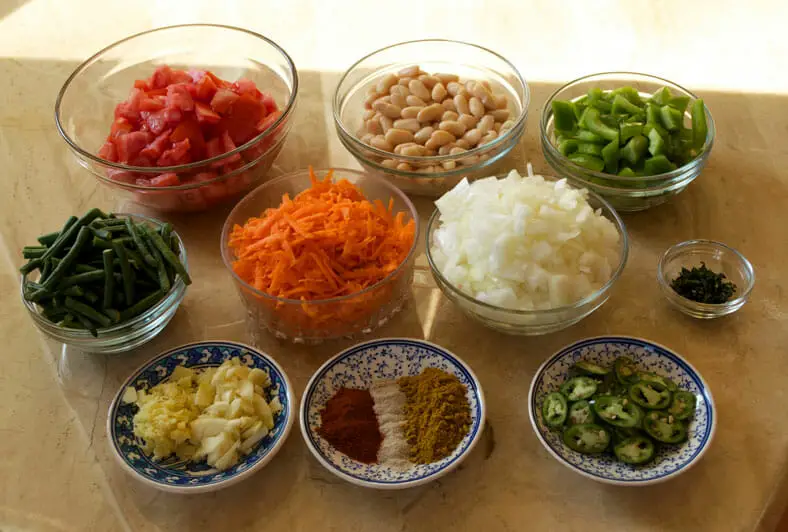

What Is Chakalaka?
Given the diversity of the South African cuisine from which it hails, it is actually fairly apropos that chakalaka have so many different versions.
South African cuisine is often referred to as the “rainbow cuisine” because of its many influences. Starting with indigenous peoples like the Sotho and Nguni speaking tribes, South African recipes also have strong European influences as cultural remnants from eras of colonization. On top of that, migrant workers from South and Indo-Asia have contributed Malay, Indian and Indonesian culinary influences to the area as well… to name a few.
For chakalaka, the recipe supposedly hails from Johannesburg and the urban area of Soweto. Soweto borders the city’s southern mining belts and became the de facto home to black South Africans who were forcefully evicted by oppressive (oft European-controlled) city authorities. For those who found employment in the neighboring mines, the origins of chakalaka came from an effective way of combining leftover ingredients together into a nourishing yet still tasty meal to fuel a hard day’s work.
One of the more intriguing parts about chakalaka is that it’s hard to describe what it actually is as a recipe. Some recipes consider it as a condiment. Others as its own stew. And others even consider chakalaka to be a salad that’s simply been heated through the pan.
It is traditionally paired with mealie pap – a porridge made from corn meal – but also is commonly eaten with rice, with grilled meats, by itself… even as a side to soup.
Some (we) may say chakalaka is the swiss-army knife of recipes.
About the Recipe
At the foundation of it, the chakalaka recipe must include onions, tomatoes, bell pepper, curry and chilis. Another very common ingredient to have are heaps and heaps of grated carrots. From there, it’s completely up to you how you’d like to dress it up.
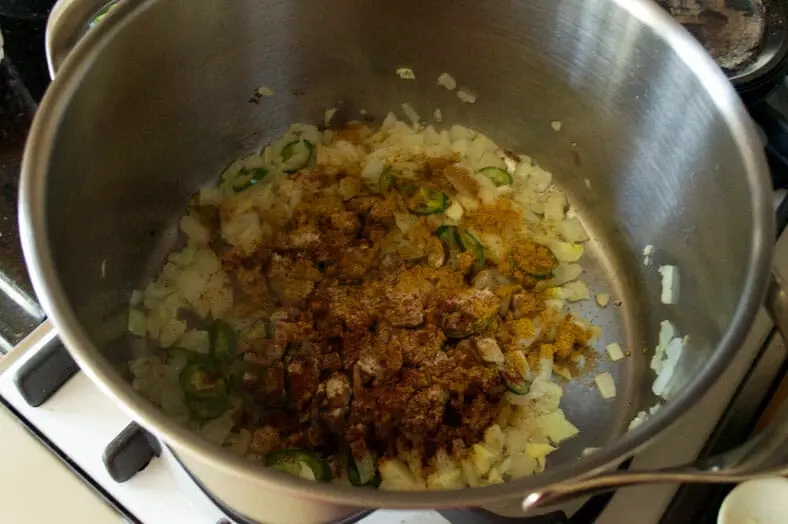
As part of a presumably Malay or Indian influence, most recipes of chakalaka will include a form of curry powder or curry paste to add a complex flavor. Other herbs, roots and spices that we’ve seen added include (but are clearly not limited to) peri peri, chili powder, white pepper, garlic, ginger, fresh coriander, fresh parsley, fresh thyme. We have great reason to suspect that this list could go on and on and on.
One ingredient in particular, however, caused for healthy disagreement and contention across chakalaka recipes. And yes, we mean literal disagreement in blog comments, recipe forums, YouTube comments and the rest.
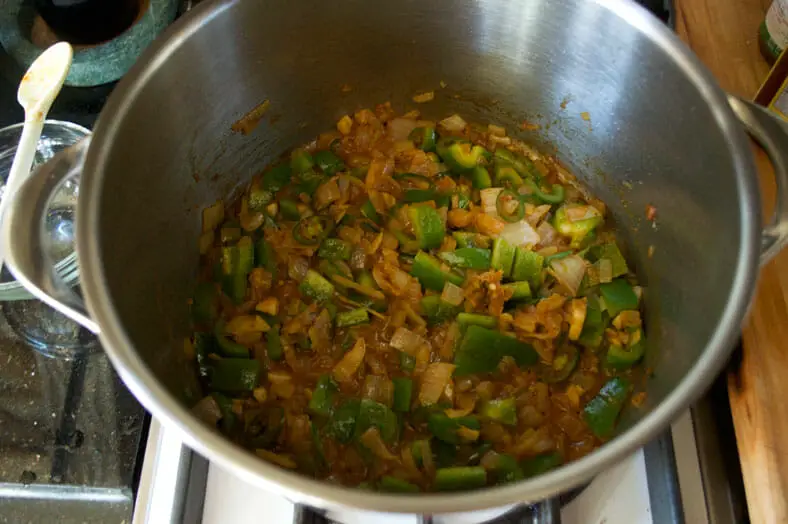
What makes this online debate so interesting is that it all revolves around beans. Most recipes we came across added cooked beans, commonly baked beans from a can pre-cooked in tomato sauce, to make the recipe more wholesome and give it more body.
Whatever you decide to add to your chakalaka, the process of bringing it together will be roughly the same. Start by frying the onions in oil along with perhaps garlic and most certainly the chilis. Then, you sequentially add your vegetables and spices into the pot, finally ending with your cooked beans… if you choose to add. End to end, chakalaka should take no more than 15-20 minutes to cook.
Our Take on the Recipe
In our research for this recipe, we were personally drawn more to versions of chakalaka that could serve just as much as a main meal as it could a condiment, which is why we chose our original reference recipe to be one with more ingredients.
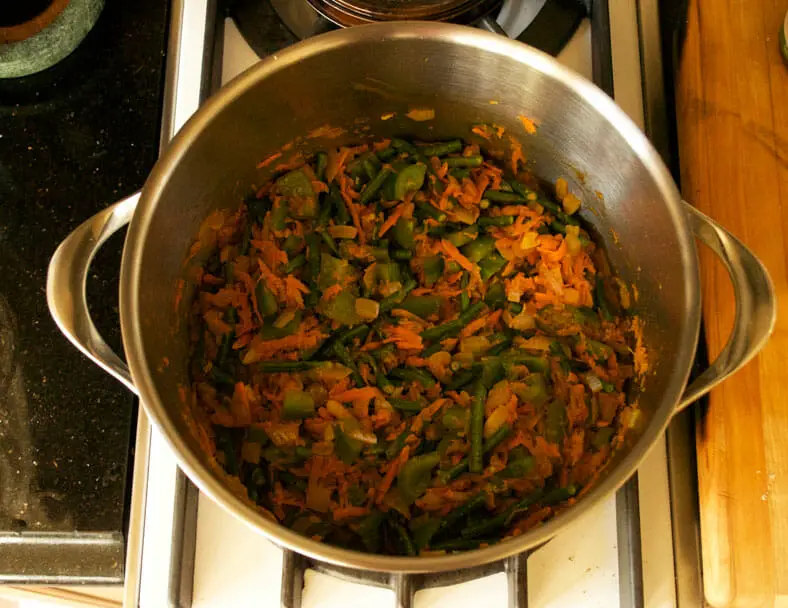
Rather than using canned beans pre-cooked in tomato sauce, however, we opted to take plain cannelloni beans and recreate the tomato sauce with the use of tomato paste and fresh tomatoes.
From there, we were a bit more liberal when it came to the inclusion of other spices. In addition to the touch of curry powder, we added white pepper, paprika, and freshly chopped thyme to add a depth of flavor to our chakalaka.

For our chilis, we found that two serrano chilis – enough to pack a punch – was the perfect amount with seeds and all for the requisite spiciness needed for a chakalaka.
Whatever its originally intended use may have been, chakalaka is a fantastic recipe that quite literally goes well with anything and in any scenario. Enjoy!
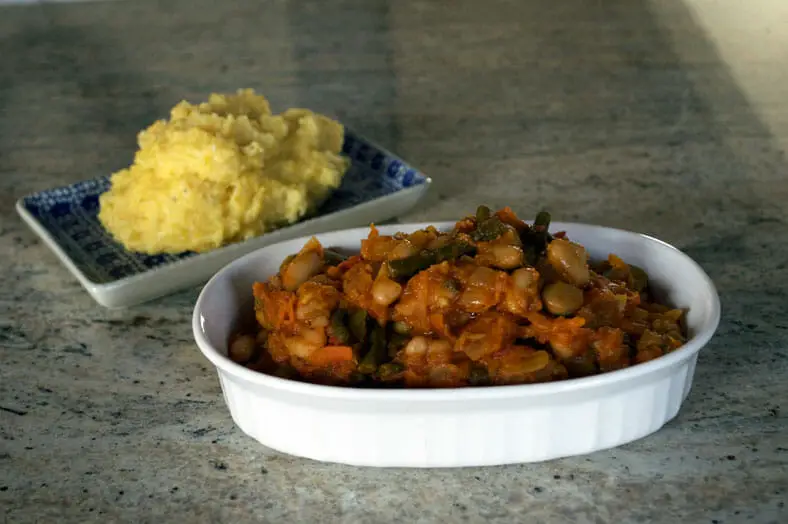
What’s in your version of chakalaka? Comment below!

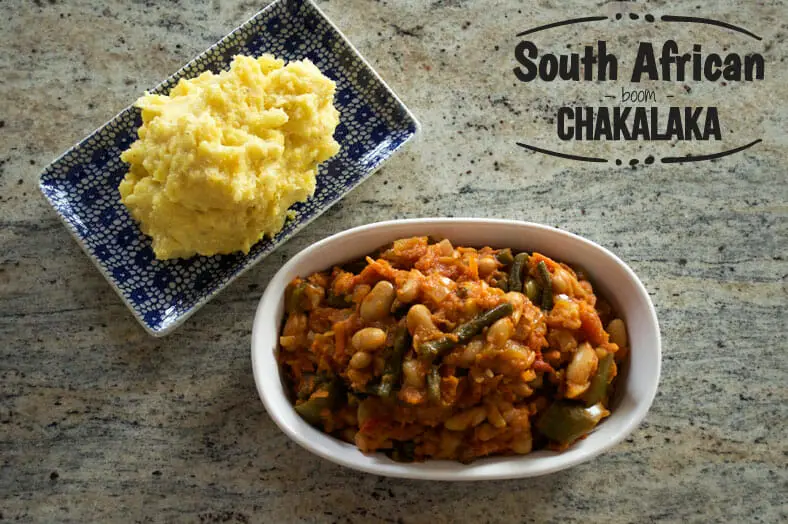
SO YUMMY
p.s. I really appreciate the unobtrusive “boom”
Haha thanks Erin! We figured it’d be a nice touch 🙂
When I was served this it was on the breakfast menu, served with eggs. It was fabulous. Thanks!